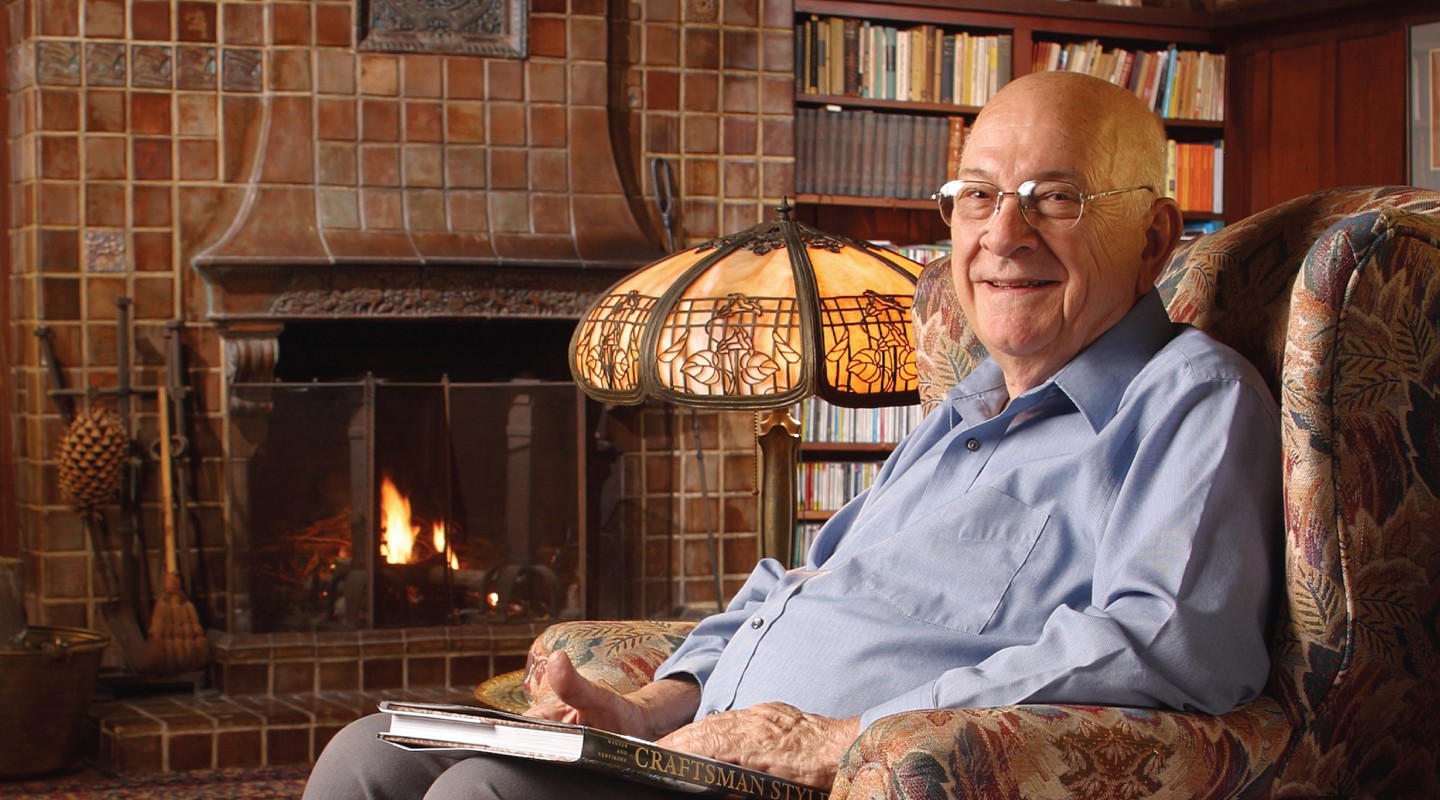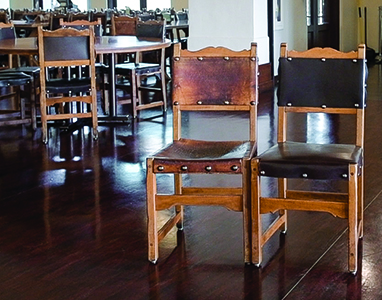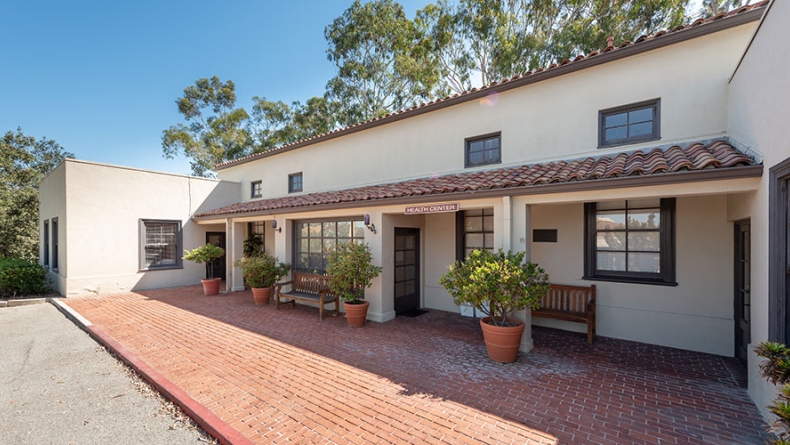
Bob Winter cements his Oxy legacy posthumously with an endowed faculty fund in history and art.
For years, Bob Winter joked that he had left his landmark Craftsman house in Pasadena to Occidental to fund a new Myron Hunt-style façade for the Arthur G. Coons Administrative Center, which he referred to in his famous guide to Southern California architecture as “the Chrysler showroom.”
Today, the sale of the house that Winter, Arthur G. Coons Professor of the History of Ideas Emeritus, bought in 1971 for $46,500 has yielded more than $1.4 million to fund his real purpose: the creation of the Robert W. Winter Endowed Faculty Fellowship to underwrite faculty positions, research, or programs in the Core curriculum or the departments of history and art.
The two-bedroom, two-bath house, designed in 1909 by master tilemaker Ernest Batchelder—the subject of one of Winter’s many books on the Arts and Crafts movement and architectural history—is listed on the National Register of Historic Places and needed the right buyer after Winter’s death in February 2019 at age 94.
Careful marketing eventually found that buyer: a fellow Pasadena preservationist who was downsizing from her own landmark home designed by Greene and Greene. The Batchelder House “is one of those houses that is best lived in, in my view, preferably by someone who knew Bob and fully appreciates its importance as a hub of the Arroyo culture that Bob cared so deeply about,” says Ted Bosley, noted Greene and Greene scholar and friend of Winter’s.
The contents of the house, which were not left to the College, were sold at a well-attended estate sale in June 2019. Prior to the sale, a team of Oxy faculty members and librarians reviewed Winter’s book collection and selected between 250 and 300 volumes on such subjects as Arts and Crafts and California regional arts for the Oxy library.
Winter’s personal and professional papers, memorabilia, and research files are now housed in Occidental Special Collections, where USC architectural librarian Ann Scheid is assisting with their processing. (His extensive 35mm slide collection of Southern California architecture was transferred to the College a decade ago and is now available in digital form.)
More endowed chairs: When Johnson Student Center was renovated and expanded in 1998-99, 200 of the vintage wood-and-leather chairs that have served generations of students were completely restored. Another 100 new wooden chairs that matched the originals were also purchased at the time for use in Gresham Dining Hall.

While the exact age and source of the Gresham chairs is unclear, their sturdy design is synonymous with what was known as Freeman Student Union when it opened in 1928. “My dad [Ted Brodhead ’27] told me he purchased them when was graduate manager at Oxy and gave me one which I still have,” says Loren Brodhead ’59.
Several months ago, Brodhead was walking through Gresham when he noticed how dilapidated some of the chairs had become. Meanwhile, Amy Munoz, associate vice president for hospitality services, was beginning to despair of her ability to keep the chairs in use, given that purchasing new chairs would be cheaper than repairing the old ones. “I feel like the custodian of the furniture and fixtures in this building,” says Munoz, who sends out about a dozen chairs each year for needed repairs. “Frankly, I didn’t want to be one who got rid of these chairs.”
So, when Brodhead called out of the blue and asked about helping with chair repairs “at a reasonable cost,” Munoz was delighted. Brodhead, who lives in Arcadia, shopped around and found Ruiz Shoe Repair in Sierra Madre, whose owner, Mike Kaladjian, gave him a quote of $230 per chair. That’s about one-third of what the College has been paying to repair each chair in recent years, Munoz says.
Impressed by the job Kaladjian did on a test chair, Brodhead proposed to his wife, Alice ’60, that they pay for the restoration of 10 chairs. Alice mentioned the project to Ginny Cushman ’55, and she and her husband, John Cushman ’55, volunteered to pay for another 10. “We had 20 chairs taken care of, right off the bat,” Brodhead says. “I then started contacting classmates and other people I know—to see if anyone else wanted to participate.”
In just a few months, Brodhead’s grassroots campaign has raised sufficient donations to refurbish 85 chairs, each of which will bear a small metal plaque with the donor’s name. “Now we’re talking about setting up a fund to help pay for future restorations,” Munoz says. “I am extremely grateful to Loren, he’s worked so diligently to get people to fund chairs. It’s been one of the bright spots in the past few months.”
“One couple I talked to said, ‘We met while sitting in those chairs!’” says Brodhead, who continues to urge alumni to join the effort. “People remember those chairs.”
Photos by David Gautreau (Winter) and Marc Campos (chairs).



